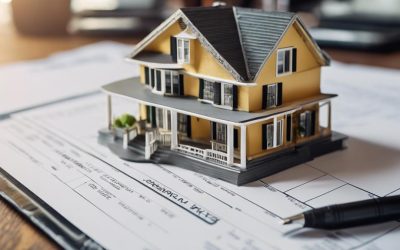With the increasing demand for flat ownership, many people find themselves asking whether they should buy the freehold to their flat. With so much to consider, such as service charge and ground rent, collective enfranchisement and lease extensions, it can be difficult to decide if buying the freehold is a worthwhile investment or not.
Buying the freehold to your flat has both advantages and disadvantages. You benefit from having greater control over your property, as well as long-term financial benefits. However, there can be significant upfront costs and ongoing responsibilities, soit is important to research before making a decision.
It is important to understand all of the implications of purchasing a freehold building versus a leasehold property before making any decisions. In this article, we will explore all the factors involved in deciding whether you should buy the freehold to your flat or not.
What is freehold ownership?
Freehold ownership entails owning both the building and the land it is situated on. This means owners have exclusive rights to use and manage the property in whatever way they choose, so long as it abides by applicable laws.
It also means that they are responsible for all costs associated with maintaining, running and improving the property.
The benefit of purchasing a freehold flat is that you gain complete control over your home, while avoiding pesky service charges, ground rent and lease extensions which are common with leasehold flats.
Did you know that there are over 4 million leasehold flats in England and Wales? Not only is this the most common form of flat ownership, it’s an interesting concept when you think about it. Buying a leasehold flat effectively means that you acquire a very long tenancy while the freeholder owns the building and the land it sits on.
It is possible to buy a share of the freehold under participation in a collective enfranchisement. This is a process by which you join with the other leaseholders in the building and buy the freehold of the building, according to your rights under the Leasehold Reform Housing & Urban Development Act 1993.
This is well worth considering since the benefits of owning the freehold of your flat (by way of a share of the freehold of the building) can be substantial.
Reasons to Buy a Freehold Flat
If you’re a flat owner, you may be considering buying the freehold of your property. But why should you? Here are some reasons why purchasing the freehold to your flat could be a wise decision.
The most obvious advantage of owning a share of the freehold means that you will part-own the ground and structure of the building that your flat forms part of outright, in legal terms. This gives you more control over your own home.
For instance, if you want to make any major home improvements such as building or extension works, an external freeholder would be unlikely to approve such plans, while a group of residents owning the freehold might be more favourably inclined.
The management of the building, which may previously have been carried out by the landlord or his managing company, will now be in the control of the new collective freehold owners.
You can appoint your own property management company if you wish, and set your own service charge for the provision of essential services such as maintenance, cleaning and landscaping of communal areas/grounds.
Crucially, as collective freeholders you have the ability to grant yourselves long lease extensions for a nominal price, while abolishing any ground rent. What’s more, you are not bound by the 90-year term that applies to statutory lease extensions – the new lease can be of any length.
Finally, as enfranchisement specialist Brian Gale points out, “don’t underestimate the psychological benefit of being a part-owner of a freehold building, which can be an attractive selling point with future buyers.” Does your building qualify?
In order to be eligible for collective enfranchisement , the premises must be either a self-contained building or part of a building, and contain at least 2 flats owned by qualifying leaseholders, e.g. those whose leases have 21+ years left to run.
Two thirds of the total number of flats must be owned by qualifying tenants – either individuals or a company – who do not have to be residents. However, the freeholder (or a close relative) must not live in the property.
Once the above criteria have been met, the decision to proceed with collective enfranchisement must be supported by 50% of the flats, so the landlord cannot object. Buying the freehold of a residential block can be a lengthy and complicated process, so it is advisable to seek specialist advice and guidance from a solicitor and surveyor.
It should be noted that tenants do not have the right to acquire the freehold of their block if the following conditions are present:
- Any leaseholder who owns 3+ flats in the building won’t qualify
- A mixed use building won’t qualify if the commercial area accounts for 25% of more of the overall
- A building with a residential landlord and having 4 flats or fewer may not qualify
- National Trust properties or those within a cathedral precinct, as well as some Crownproperties are exempt
How does collective enfranchisement work?
Once you have established that the building and tenants qualify for collective enfranchisement, the procedural framework contains the following basic steps.
First, the qualifying leaseholders must form a company and choose a Nominee Purchase who will be named on the Initial Notice. The new company will then appoint a specialist surveyor and solicitor to act on their behalf.
Next, a property valuation is required to determine the purchase price. The price you pay for the freehold will depend on the value of each flat in the building, and the number of years left on each lease. It’s important for the evaluation to include every amenity including basements, vaults, underground car parks etc that will form part of the freehold purchase.
The Leasehold Reform Housing & Urban Development Act 1993 has a formula that your surveyor can use to estimate the premium payable for the leaseholders taking part in the enfranchisement process.
The price specified on the Initial Notice must be both realistic and affordable. Don’t forget that there will also be professional fees to pay, so it is crucial that each leaseholder agrees to the price and that there is some contingency for making up the shortfall for a leaseholder who decides to change his mind and no longer wishes to participate.
The Initial Notice is drawn up with information about the building, the leaseholders and a price offer. It also sets out a responsive date by which the freeholder must respond.
Once Notice is service on the freeholder, he has at least 2 months in which to serve a Counter Notice to accept the request, amend the offer and state his terms. If no response is received by the due date, the leaseholders are given the automatic right to purchase the freehold on the terms specified in the Initial Notice. Leaseholders also have the option to apply to the Leasehold Valuation Tribunal within 6 months of the Counter Notice so resolve any remaining issues formally.
Final thoughts
In conclusion, buying the freehold to your flat can be a complicated and lengthy process. However, it could be worthwhile as it would give you greater control over your property, remove the burden of paying a service charge and ground rent, and could even result in an increase in the value of your flat. I
t is important to seek expert advice before making any decisions, and make sure to do your research on the potential costs involved.
- Rent-to-Rent Schemes: Hidden Dangers Lurk - July 6, 2024
- How to Sell Your House Fast in Kent - July 5, 2024
- 7 Tips to Sell Your House Fast - July 4, 2024


